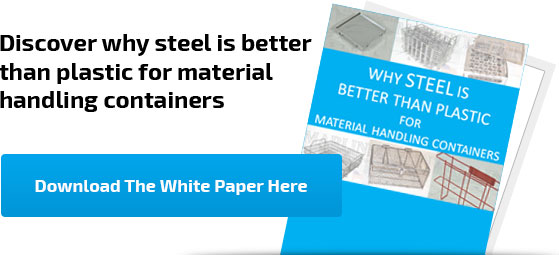On, October 1st, Marlin Steel was given the chance to make a presentation before the best manufacturers in the business at the 10th Annual GBMP Northeast L.E.A.N. Conference. In keeping with the conference’s them of Leading, Enabling and Nurturing (hence the LEAN acronym), Marlin Steel created a presentation titled: “Eleven Easy Strategies to Motivate, Engage & Empower Your Team.”
For those who may not have been able to make it to the conference, here are some highlights of the presentation given by Marlin Steel.
Shigeo Shingo and the Toyota Production System
Shigeo Shingo is the man who assembled the management
techniques and theories that would later  become the Toyota Production System. In this system, the emphasis is the improvement of the individual employees at each level of the company.
become the Toyota Production System. In this system, the emphasis is the improvement of the individual employees at each level of the company.
One conclusion that was reached about this system during a study is that: “Higher labor productivity is achieved by improving work methods & increasing worker motivation & involvement. No matter what the level of automation, people will always be an essential & vital part of production.”
In short, people matter. Because of this simple fact, it is important to develop the talents of those working at your company and keep them invested and engaged.
Eli Goldratt and the Theory of Constraints
Eliyahu M. Goldratt was a physicist who later became a business
management guru. Eli’s works include  several prominent business novels such as the Optimized Production Technique, The Theory of Constraints, and The Thinking Process, among many others.
several prominent business novels such as the Optimized Production Technique, The Theory of Constraints, and The Thinking Process, among many others.
In The Theory of Constraints, Eli Goldratt focused on human behavior and how it relates to corporations. Key points of the book include:
- If people are not predictable, there is no basis for society.
- The success of a company is determined by the harmony of human relationships within it.
- People don’t resist change on instinct. They judge the change first, then resist.
- Excess capacity must be used to grow the business, never to lay off people.
- Loyalty is a two-way street.
- Identify the core conflict that is the root of every other problem.
These key points emphasize the humanity of the workers in a company, relating how negative reactions from employees are not simply knee-jerk reactions to change. Companies that fail to recognize the importance of earning the trust and loyalty of their employees will see their success hampered by that lack of harmony in their internal human relationships.
Marlin Steel’s Change from Bagels to Boeing
When Marlin Steel was bought by Drew Greenblatt in 1998, it was a successful manufacturer of commodity-class bagel baskets. In fact, Marlin Steel was the largest bagel basket maker in America, at a time when the bagel business was booming.
However, there were problems. First, the company had an appalling employee safety record at the time. There were 18 minimum-wage, no benefits workers on the 5,000 sq. ft. factory floor, and several of them had severe, long-term injuries (such as amputated body parts) from the work of bending steel wire by hand.
Second, the tech being used by the company at the time was incredibly basic. Marlin Steel had some equipment from the 1950’s and a fax machine, and that was it. There weren’t even any engineering prints being made for basket designs. If a customer wanted to reorder something, they had to send back one of their baskets so we could copy the shape.
Third, shortly after the company was purchased, the Atkins’ Diet struck. Suddenly, people across the country were avoiding bagels like the plague, and the customers in the segment Marlin had specialized in started going belly up. Add to this problem number four, the fact that foreign competitors from Asia started selling commodity baskets for less than the cost of the steel, and you had a “perfect storm” of conditions to kill the market segment that had been Marlin Steel’s bread and butter until then.
Thankfully, even as Marlin Steel was hemorrhaging money, a solution presented itself. Marlin Steel received a call from a Boeing engineer for an order of precision-crafted industrial parts washing baskets. Instead of saying that “it couldn’t be done” or “we just make bagel baskets,” Marlin Steel’s leadership realized that the majority of its sales had been in the wrong market all along.
After this epiphany, Marlin Steel’s owner began to invest heavily in factory automation and employee improvement. The machinery gave Marlin’s manufacturing team the consistency and manufacturing speed necessary to outshine foreign competitors who relied on manual labor alone. The new focus on employee training increased the flexibility and knowledge of the entire staff, improving creativity and responsiveness in the face of new challenges.
Eleven Easy Strategies to Motivate, Engage & Empower
What are some of the strategies that Marlin Steel, as a company, now uses?
Here are a few easy to  implement LEAN strategies inspired by the teaching of Shigeo Shingo and Eli Goldratt that have helped Marlin Steel go from the brink of extinction to being more successful than ever:
implement LEAN strategies inspired by the teaching of Shigeo Shingo and Eli Goldratt that have helped Marlin Steel go from the brink of extinction to being more successful than ever:
- Cash Bonuses. When a Marlin Steel employee meets or exceeds production goals, they get a cash bonus. This bonus helps to motivate employees to work hard to meet goals every day because they get to see results from their hard work in the short term (once every two weeks). With concrete hit or miss goals that are aggressive, but achievable, employees know that they can earn the reward with consistent, high-quality work.
- Training is 5% of the Labor Budget. Workers are the foundation of your company’s success. Training makes that foundation stronger. With training, you talent will have top-notch skills and be able to better understand the needs of your clients (as well as the technical terms used by vendors), making them more effective and less likely to make costly errors.
- Pay Well. Beyond cash bonuses, offering workers competitive base pay shows your employees that they are valued. Remember, you get what you pay for. As a side benefit, word about your company’s great benefits gets around, attracting your competitor’s top talent. As Nucor Style states:
- Hire 5 Talented People
- Pay Like 8
- Produce Like 10
- Automation’s Benefits. While the saying “it’s a poor craftsmen who blames his tools” is a popular one, the tools you use to do a job do make a difference. Providing your employees with the best tools for the job gives them an edge over others, allowing them to get more done in less time. Automated robots provide an enormous safety advantage by allowing employees to oversee various tasks instead of putting them right there in the cage with high-temperature welders and twisting metal. Automation also gives these employees the chance to do brain work instead of hard, tiresome, repetitive manual labor.
- Skills Matrix. Posted prominently in the lunch room for all to see, the skills matrix lets every employee know what skills are needed to keep the company running smoothly, and who has these skills. Everyone knows what the others can do, as well as what skills are most important to the company and need more coverage.
- Raises for Learning New Skills. When an employee learns a set of skills that the company needs to keep operating, they earn more money for these abilities. This encourages people to learn more skills, which in turn adds skills redundancy to the company so that production doesn’t grind to a halt because one key person took a sick day.
- Hiring. Of all the aspects of running a business, hiring is one of the most fundamental, and important activities of all. Be picky, take only exceptional people. Take the time to use a personality test to see if prospects will fit well with your company’s style. Also, show these prospects exactly what tasks they will be handling before they accept your employment offer so that they can make a more informed decision.
- Fire Fast. Everyone makes mistakes. Sometimes, that perfect new prospect ends up being more of a drag on productivity than an asset. When this happens, be quick to cut the cord before they can have too much of an impact on the rest of the group. As quickly as you hire new talent to please clients, fire bad matches even faster.
- Safety. People like working for a place where they know that they’ll go home with all of the pieces they showed up to work with. Establish an empowered safety committee to identify potential problems and bring them to your attention and create fixes before they become an actual disaster. Invite in regulatory agencies such as OSHA and pay attention to any recommendations they make. As was mentioned before, strong workplace automation helps to improve safety even further.
- Repeatable Clear Processes. Team members often enjoy have a clear, consistent step by step methodology for their work. Try to create visual cues for employees to aid with memorization of such processes. Shoot for earning an ISO 9001: 2008 certification. It is easier for employees to innovate when they have a repeatable quality process that they understand.
- Be Transparent. Your employees usually know you better than you think. When communicating with employees, being candid can go a long way towards earning their respect and loyalty. Employees can often detect when their bosses are being dishonest, or when a lie of omission is being made. Remember, if you lie to your employees, what reason do they have to be honest with you? Earn their respect and trust by being open and honest, and they’ll have an easier time being open with you.
Being selected to present at the Northeast LEAN Conference for 2014 is an honor, and we here at Marlin Steel hope to see you at next year’s conference!



.gif)


